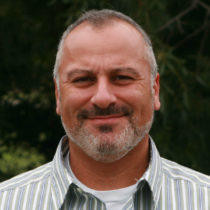Landscape Architecture for Landscape Architects › Forums › GENERAL DISCUSSION › Land Planning HELP!
- This topic has 1 reply, 4 voices, and was last updated 15 years, 3 months ago by
 David J. Chirico.
David J. Chirico.
-
AuthorPosts
-
April 3, 2009 at 3:26 am #174618
 ncaParticipant
ncaParticipantI’m a fifth year LA student working on my undergrad capstone project. I’m choosing to take an urban design/land planning approach focusing on a new “town center” for a rapidly growing primarily agriculturally based rural community. The focus area is roughly 300 acres with an established county road main street and very nearby river paralleling.
My hangup is that there is seemingly little in the way of obvious physical cues due to work with due to it being a rural area. Our program doesn’t particularly teach to community planning (one very short semester in urban design). I’m looking for any guidance on basic starting points land planners may use in such an instance in developing a framework for a well composed mixed density town center. I’m not necessarily looking for ideas for how to approach this site, but general insight into the physical design process for such a project ie 1) layout street grid, 2)overlay public space 3)diagram building density/intensity…???
I’m finding myself drawing in circles and having a hard time getting past the diagram phase. I have a decent idea of how I want the space to be used and the different programmatic functions, I just don’t feel confident in the process of implementing the ideas on paper.
Could some of you experienced in this type of work share your process (and if the process is different for each project perhaps share the process of one of those) or point out some good resources for the actual physical design process of communities and towns?
Thank You!
Nick
April 3, 2009 at 1:11 pm #174625 David J. ChiricoParticipant
David J. ChiricoParticipantI am sure you want this project to be the pinnacle of your work, and are shooting for a pie in the sky layout so take this information as a loose guide and not a boundary or restriction.
One of the first things we do in our office is look at the codes and ordinances for that area to see where we can access a property, road widths, parking requirements, the setbacks, density, landscape buffers, types of acceptable plant material, building heights and so on.
There is a website, http://www.municode.com where you can select the area you are developing and look at the zoning ordinances for that area. If none exist for that area, pick your favorite urban site and use their zoning.
And if I were you, I would document and include all this research in your project because the real world application would be important to you finding a job.
Hope this helps,
DaveApril 3, 2009 at 1:34 pm #174624 ncaParticipant
ncaParticipantThanks Dave.
I’m trying not to be so concerned with whatever the end product comes out to be as I am in learning a process or approach to tackling projects of this magnitude and larger. I would like the final plan, however to be a long(er) range vision for a rapidly growing community. If that, by definition, is “pie in the sky,” so be it.
I actually had the opportunity to speak with my a planner/la last night coincidentally. My issue, mainly, is how to approach the physical design portion of the process after the diagrams and big ideas have been established. My process has been to “clip” similarly scaled aerial images of existing city fabric and trace those patterns on to the site where I see appropriate and according to my land use plan to get a rough idea of lot sizes and building envelopes. I wasnt sure if there was a less “clunky” feeling process. The person i spoke with last night let me borrow one of the “design books” for Stapleton in Denver,which is a huge new urban project built a few years back. The book goes through architectural standards, etc. This is more along the lines of what I was looking for. The town I’m working on has zoning ordinances and I have begun to look at them, but even the town planner seems very inclined to have those of us working on this site to shoot beyond local guidelines or at least expand.
There is a fair amount of rural or county density single family housing along main street in prime “downtown core” zoned areas. I’m also wondering how much one should pay mind to existing uses in say a 20 year vision outside of phasing?
Thanks David..
April 3, 2009 at 3:10 pm #174623 Chad CrutcherParticipant
Chad CrutcherParticipantNick,
I just wanted to start by letting you know that I am enjoying your angst! Welcome to the design process, especially its first step…project acceptance…the emotional battle a creative spirit must fight until preconceptions are surrendered, the mind relaxes and opens to inspiration. While our insights as experienced professionals might be helpful, at this point in your education, I think there is value in your suffering as you search for that conceptual spark that will ignite the right big idea.Now, allow me to offer one piece of advice on what you should do, and one technique I can suggest to help your journey of discovery…and that is how I approach design…as the process of discovering the quintessential qualities embedded within the project program, site and context (including all social, cultural, economic and jurisdictional influences) that, when explored and tinkered with, allows concept to evolve into form. My point? Allow your own instincts to guide you. Each of us approaches problem solving uniquely. You are still in the process of discovering your own mind…so relax and enjoy it! This is not a repudiation of collaboration, just that in school, the exercise is meant to train your mind so you will be able to collaborate.
Having done many projects across rural Nevada these past 5 years, I have had to learn how to set aside my San Francisco big city air and humble myself to the spirit of equally humble communities. When I succeed at doing this, allowing the process of discovery described above to play out, I have found surprisingly wonderful and truly unique aspects of every small town and rural project context that, in their fundamental influence on the environment and lives of people in it, basically align themselves into conceptual form. I know the following comment is heard often in the creative world, but that is because it is true…and that is that endless viable and successful concepts are already embedded within the project (site, context and program), waiting for application of the design process to reveal them with the resulting solutions as varied as the souls applying the process.
Now, how does all this touchy-feely stuff apply to the boards? Well here is my one tip, rooted in the preceding: simply continue to tinker, through whatever techniques your own instincts and passion seem to favor, be it graphically, intellectually, both, or whatever, and root down deep into the project. I know you may not have been able to visit the site, meet the folks and get hands-on experience of the place, the way it looks, feels, smells, sounds and tastes, so your imagination must play a bigger role and insert assumptive bits of information to mimic the influences of place qualities on the process and outcome. You mentioned overlaying urban patterns from other places over your site to hopefully trigger an idea. While I agree studying other solutions for other places in other times is valuable, that value lies in understanding how and why those other places became what they are …not to simply search for and apply another’s solution to your site. Play with the patterns revealed in your site, applying he lessons learned from other sites, but remain true to your site by not imposing…let the ideas evolve. Have fun. I know I am in the zone when once full rolls of trace paper now lie in crumpled heaps on the floor up to my knees! Yes, it can be painful. It can feel like drudgery sometimes. But when finished, you’ve really had an experience. And, if the process has been successful, you will end up with multiple, and potentially very different concepts that you are equally passionate about and able to defend.
Good Luck,
Chad
Do well doing good.April 3, 2009 at 3:56 pm #174622 ncaParticipant
ncaParticipantThanks Chad,
I hope I’m not coming off the wrong way..maybe I should check my angst haha..
It’s encouraging to know that, as I understand, the process is always organic and that there is not necessarily any formula. I’m sure you’re right that this is more a process in understanding how my own mind works with the marginal benefit of discovering a “solution.” Generally speaking, I think an undergrad studio education has been about understanding how each of us generate ideas and how to communicate them in some legible form.
I feel like I’m making connections on this site in my mind and have a good feel for the local vernacular and heritage. What I’m struggling with, to put it another way, is that I feel like I’m wading in the gap between the nebulosity of ideas and the strictures of physical design ie I know this block could be this long and this deep because of this but the order of operations trips me up. Is it typical to overlay a circulation and street grid prior to laying out blocks or does this just happen in tandem, sometimes in reverse, and sometimes not at all?
I get the feeling that as I type I’m answering my own questions and all you experienced people out there are reading this with big nostalgic grins..Still, it helps me to move forward knowing that what I’m doing is part of a natural process. Suggestions like looking into zoning ordinances is also helpful in guiding me through the process I think in making these connections.
I’m finding the most difficult aspect to this exercise is relating to the scale which I think is probably fairly common for entry level designers and students. Are there any more specific techniques anyone can suggest for helping become more acquainted with very large scale land areas? I have resorted to reading the graphic scale and drawing the crude dimensions of a car or house in plan along the margins in order to create some realtionship to what I’m looking at in 200 scale.
Thanks for all the help and suggections Chad and David..
April 3, 2009 at 4:48 pm #174621 Lawrence GreeneParticipant
Lawrence GreeneParticipantI may be way off in my comments, but- If you are struggling with the overall site design, maybe a step back into the feasibility phase may help. Have you answered the following questions?
Does the community/ developer want retail and or commercial space and if so how many square feet and how much parking will each use require?
Does the community/developer want a combination of single family homes, condos, apartments?
Does the community/developer want portions of the development age restrictive (55-over)?
Will the network of interior streets be looped or will there by multiple dead-end streets?
Is the intent of this design to preserve a portion of the land as open space?
If so, within the open space will there be trails, fields, playgrounds or be left undeveloped?
Will this development require a sewer connection, extension or will the effluent be accommodated by onsite septic systems?
Will this development require a water connection, extension or an onsite well?
Are the soils within or portions there of suitable for development?
Will the surrounding streets accommodate this expansion?
Will the commercial and residential uses have separate entrances? Do the proposed entrances have sufficient site distances?
Will the proposed grading of the site design require importing-exporting soil or will it be a balanced site?
Will this development connect into public transit?Answering these questions will help determine a design program and a building envelop.
Good luckApril 3, 2009 at 4:49 pm #174620 Chad CrutcherParticipant
Chad CrutcherParticipantYour thread is on the right track. Continue to play with the patterns and relationships revealed by existing conditions, blending in project programming elements; as you experiment with their impact on the existing patterns, new patterns and relationships might reveal themselves. It sounds as if you are lost, but that is precisely where you need to be…in a new position outside your comfort zone wherein trying something is your only option, and, if it doesn’t work, trying something else. Trial and error, fake it till you make it, experiment and explore…keep testing something different. I told you about the copious amount of trace paper consumed when I am designing. It takes alot of effort to let something happen. Try drawing stuff with your shoulder instead of your fingers…meaning, keep your focus at 30,000 feet to begin with…don’t get bogged down in detail just yet…remember, you are still searching for that BIG idea. You can’t find it with your nose to the grindstone….fly like a bird and free your thinking. When a big idea expresses itself, then begin to investigate by drawing with your elbow…a little close to the ground so to speak…drawing with your fingers only after you have solved the bigger pictures first.
I realize this sounds all so positive, so easy. That’s the benefit of more than 30 years struggling through it…and it is often still a struggle. The key is, having endured this long, I do know the elation of success and the gratitude of those served by it.
Enjoy!
April 3, 2009 at 5:24 pm #174619 ncaParticipant
ncaParticipantLawrence-
This is a studio project I’m trying to tackle virtually on my own with little program or requirements. I can make it all a park if I want or I can develop a more equitable program of building development, public space, commerce, culture, and community.
I have been in touch with the town planner who is in the midst of conducting a survey of citizens with questions like “what would make you spend more time on Main Street? Cafes, doctors office, or restaurants?” I think this would go a long way in informing my program, but the survey will not be complete for another month or so in which time, I’ll be finishing the semester and it will be too late. Perhaps this site is not feasible for this type of design at this point? Or can I work with a “fake” program?
In some ways I feel I need to impose my ideas of what the place could and probably should be due to the situation (I realize this doesnt happen in the “real” world).
I’ve loosely bubble diagrammed the area with land uses based on zoning and future land use plans generated no more than 12-24 months ago and skimmed ordinances and things like town newsletters which speak alot about future development. I’ve also spent a fair amount of time on site and spoken via email to civic officicials. In all that, I have not necessarily generated a quantitative list (program) of requirements.
I have made many crude notes and short lists based on the obvious needs of a small growing town center like commercial activity, public space, walkability, transit, civic buildings and uses, schools, housing (affordable and a variety) etc.. etc… I have not however calculated things like parking requirements and circulation patterns. The site is virtually a blank slate with a county road that runs for miles through open alfalfa fields.
The current residents mostly live in rural communities along the periphery or in new subdivisions which are highly decentralized and mostly centered around golf courses and man-made reservoirs. There is a need and demand for a commercial/civic/social center and that’s what has brought me to this point- mostly general research and broad analysis.
There are but a few cues I have taken from the existing landscape such as some existing greenfields, old growth tree groves, a scenic river and riparian corridor, transit line and school. My inclination is to develop the idea of a TOD with an ecologically conscious development pattern tthat preserves nearly as much as it disturbs and is responsive to the local context of the rural agrarian western farm community. Perhaps though I do need to step further back and begin developing an actual site program based on realistic properties of the community? Is this feasible without actual community input? Should I fake it til I make it as Chad suggests? Is trial and error the best approach?
Thanks all..
-
AuthorPosts
- You must be logged in to reply to this topic.

